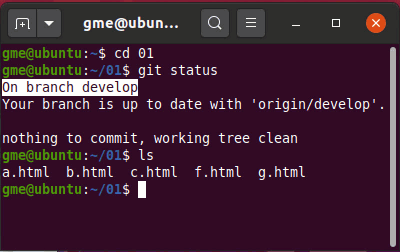

You can delete them using the command git remote prune origin.

This command will not delete those branches, just list them. You can connect to the remote repository to see what orphaned branches can be deleted or pruned from your local repository: git remote prune origin -dry-run. Make sure you don't delete any branches you might need later! If you want to delete the branch called badbranch, use the -D switch to force the deletion if it doesn't work: git branch -d badbranch. If you see any branches in there that you don't want, you can use the command git branch -d. To find out what branches you currently have in your repository, use the command git branch -a. Orphaned branches are branches that are not connected to any others and have been left unused. You can use the git prune command to remove orphaned branches. Use git prune to remove orphaned/unused branches It's a good idea to check and see if you can clean out some of the branches you don't need anymore. Perfect! Now its ready to send over to GitHub!īut wait! Let's say you are the repository owner and want to merge your branch with the master branch before pushing it back remotely. What would you use?Īlright! Now you've got all of these branches in your local repository. Now run the rebase command to point the wwbranch to the tip of the master branch: git rebase master ww. To do that, first make sure that the wwbranch is in your working directory with git checkout ww. You want your branch to work off of the latest commit on the master branch: 3. Now your tree should look like this: Updated master branch
Back file as master git update#
Say there are a few extra commits on that master branch in the repository. How will you update the master branch with the new commits but also make sure that your branch comes off of the new commit?įirst, you need to update your local repository with the new commits on the master branch in the remote repository with git pull -rebase. This creation of wwbranch is also Commit 2 on the master branch: Branches on your local repository It also has a new wwbranch that you created on the tip of the master branch. Imagine your local repository has the master branch that you cloned from GitHub. Did you know that you can use rebase when pulling from your remote repository? You know the basics of using these, but let's take a look at a few concrete examples, so you're confident in your branch management. Use git merge and git rebase to make sure you have all of the commits and branches you need on the master branch. Go through your branches to see what branches need to be a part of the master branch. Let's git to it! Use git merge or git rebase to combine branches Manually delete outdated pointers in the ref folder in your local repository file. Use interactive git rebase to squash commits and logically order your commits and branches, as well as give your commits descriptive names. Use git prune to remove orphaned branches. Use git merge or git rebase to combine branches. Remember those branches? You need to clean them up to keep your project healthy! 😄 To do that, follow this game plan: Well, GitHub isn't so different from pruning trees. Um.I'm here to learn GitHub, not plant maintenance! 🙄 Quiz: Define procedures for effective organizational strategies in teams
Back file as master git code#
Quiz: Manage your code using advanced versioning techniquesĮnhance your Github experience with extra toolsĪutomate processes with GitLab continuous integration Use subtrees and submodules to add a public repo to your project Learn branch management with git merge, git fetch, and git pull
Back file as master git how to#
Quiz: Identify how to correct common errors when using GitHub

Turn back time on your mistakes with git resetįix up individual commits with git logging techniques Manage common issues when working locally and remotely with Git Handle those mishaps on your local repo like a champ Quiz: Explain how to save your code locally and remotely using GitHub repositories Write code efficiently by using a local repositoryĬontribute to an open source project with basic commands on Git

Play around with Github on your own account Dive into Git's superpowered advantage: version control


 0 kommentar(er)
0 kommentar(er)
